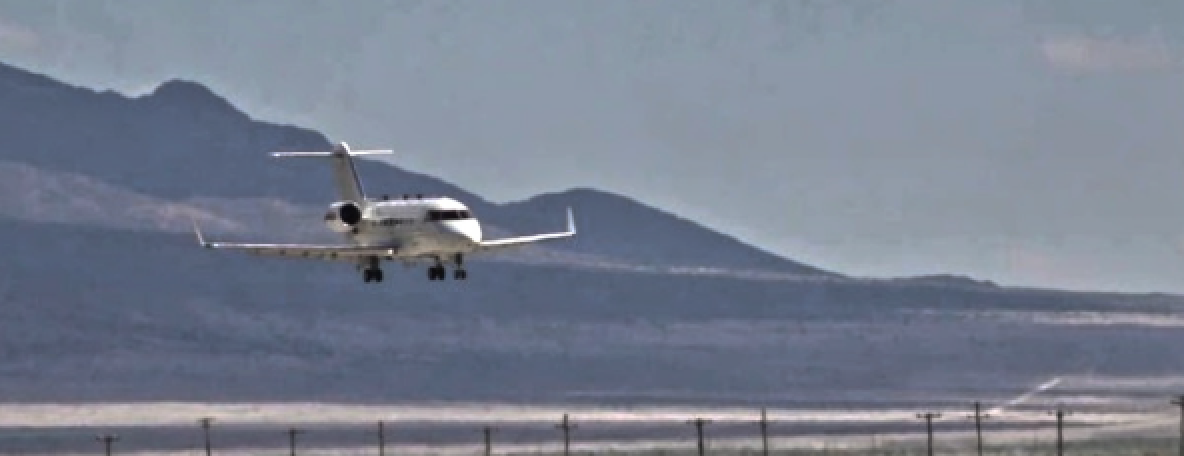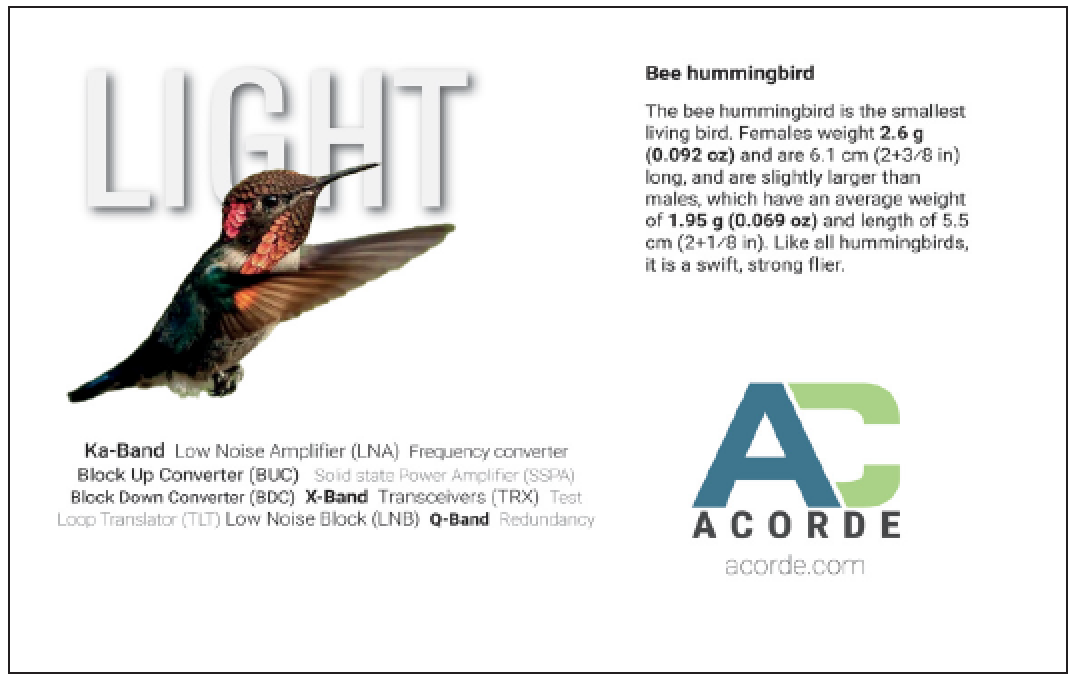During the Civil War, the Army used aerial technology, such as balloons, kites and pigeons, to gather intelligence and to survey the battlefield giving ground commanders the ability to make informed decisions on how to maneuver into advantageous positions.

The Airborne Reconnaissance and Electronic Warfare System (ARES) is an aerial-intelligence, surveillance and reconnaissance (A-ISR) aircraft that Army is contracting as a service to test which airframes will work best for the mission requirements. It is part of the High Accuracy Detection and Exploitation System, or HADES program and currently deployed in the Indo-Pacific Command’s Area of Operation. Photo is courtesy of the U.S. Army.
Today, the Army’s aerial-intelligence, surveillance and reconnaissance, or A-ISR, community still has the same mission of providing timely, relevant, and accurate intelligence to tactical, operational, and strategic commanders, but it uses airplanes instead of balloons and birds. Yet, the current fleet of more than 60 ISR aircraft are remnants of the Cold War.
Originally built for Cold War and counter-terrorism threats, current and future multidomain operations, as well as geographical and geopolitical changes create challenges with the old fleet. Threats to assured communications are increasing, resulting in a need to design a concept and build material solutions for likely scenarios that do not rely on access to allied military installations to continue the mission.
The solution to these challenges is the High Accuracy Detection and Exploitation System, or HADES.
“It will possess speed, range, endurance-at-range, and altitude for deep sensing, all culminating in its ability to overcome the physical challenges encountered by legacy airborne ISR aircraft, without sacrificing the unique quality and capability of collection that airborne ISR provides to Army and joint force commanders around the world. With exceptional payload capacity, it will offer convergence options that occur on or off-board the aircraft to cover assured, denied, or degraded communication environments.” — Lt. Col. Matt Paladino, ISR Task Force aerial chief for the Army Military Intelligence Staff
To help bridge the gap between decommissioning the old fleet and commissioning the new fleet, the ISR Task Force is using Aerial Technology Demonstrators, or ATD. ATDs are aircraft that Army is contracting as a service to test which airframes will work best for the mission requirements.
The ISR Task Force started by looking at all joint, interagency and allies’ ISR programs and compared them to the Army’s priorities. When the Task Force was finished, they decided on a large-cab business jet. This gave the Army the ability to group all the sensors on one plane with the ability to upgrade and/or add to those systems without losing performance.
jet to see how that was employed, and we put it in the [Indo-Pacific Command’s Area of Operation] to see what it could do,” Magee said. “All of it was good at the end of the day. It’s informing the HADES POR, program of record, for what we need in the end.”
During the first ATD tests, the ISR Task Force learned that the jets had longer flight times then the turboprops, which only had a five-to-six-hour flight time. The ATDs had a faster deployment capability and could travel anywhere in the world within 24 hours. They also flew higher and faster while allowing deeper sensor penetration.

The Airborne Reconnaissance and Target Exploitation Multi-mission System (ARTEMIS) is an aerial-intelligence, surveillance and reconnaissance (A-ISR) aircraft that Army is contracting as a service to test which airframes will work best for the mission requirements. It is part of the High Accuracy Detection and Exploitation System, or HADES program and currently deployed in the European and African Command’s Area of Operation. Photo is courtesy of the U.S. Army.
“When you sync all of those together, you then build a program that is now contributing to the joint fight rather than just the Army’s fight,” Magee said.
After ARTEMIS’s success in the Pacific, it was moved to the U.S. Army Europe and Africa. Here ARTEMIS showed its value.
“ARTEMIS demonstrated both the operational and financial value of the Army’s future ISR concept, providing cross-combatant command support for its relatively new four-star theater commander with responsibilities that span tremendous geography across two continents,” Paladino said. “No longer will the Army require multiple bed-down locations to access regional hotspots. A single aircraft with the speed and range of HADES can provide thousands of miles of reach from a single bed-down site, forward deployed.”
In 2022, an additional ATD, Airborne Reconnaissance and Electronic Warfare System or ARES, was deployed to the INDO-PACOM Area of Responsibility. This aircraft was larger and closer to the HADES project’s long-term goals.
“ARES revolutionized the Army’s contribution to a joint fight in that theater,” Paladino said. “ARES provides the [U.S. Army Pacific Command] an organic deep sensing capability with relevant collection capability for the modern battlefield. Adding additional altitude and persistence over ARTEMIS, ARES is competing nearly every day with the nation’s most advanced adversaries. Just like with ARTEMIS, Army Soldiers operating in concert with the defense industry are providing this support to both Armyand joint force commanders today.”
Outside of the physical aspects of the jets being able to fly faster, longer and higher, there has been some changes to the internal configurations the HADES project has built compared to the old turboprops.
“The one thing that I’m noticing is … the ability to add different capabilities if necessary and being able to tailor them to whatever theaters we’re in, which isn’t really something we’re able to do with the older platform, Some of the signals we are going after on an unclassified level in specific theaters, we weren’t able to detect with the older platform.
With these newer [platforms], just being able to go after those combatant commanders’ top priorities has been one of the biggest game changers: especially going from a tactical focus to a more strategic focus.”
— Chief Warrant Officer 2 Amber Cornelius, the ARES processing, exploitation and dissemination officer in charge with the 104th Military Intelligence Company; Processing, Exploitation and Dissemination Battalion,116th Military Intelligence Brigade.
With the diversity of the newer platforms, the PED Battalion had to change up their operations a little bit because going from a tactical focus to a strategic focus, the authority piece is different. Yet, it has allowed the Army to pick up the sensitive reconnaissance operations.
Now the PED is supporting the direct combatant commanders on the ground as well as gathering for other government agencies, such as the National Security Agency, Cornelius said.
Overall, the new ATDs have added capabilities that have helped make Army intelligence even more accurate.
“With the ability to fly higher, farther and faster in the various target areas that we’re looking at, we get vast amounts of data every mission that we fly. It is vastly different because we are able to stay in an area for a longer dwell time. These capabilities allow us to provide things like pattern-of-life; it allows us to see up and down time locations, potential troop movement or anything else you can think of.” As for building this fleet after the demonstration phase: “Being able to relay that information is mind-boggling to me.” — Sergeant Bryden Jones, a mission manager for ARES with the 104th Military Intelligence Company, PED Battalion, 116th Military Intelligence Brigade.
ARTEMIS and ARES have the ability to see these things and push the information out to commanders in real time. Having instant and relevant intelligence, Sergeant Jones added.
The Army plans to make the first purchases in fiscal year 2024 and expects the first of the new aircraft to be delivered within 2027, Magee said.
The plan is to have at least 14 aircrafts in as few geographic locations as possible to improve on training and force generation mission command, instead of the multiple locations where the turboprops are stationed now. By 2035, the PED unit will be fully equipped with Soldiers fully controlling operations.
As the Army builds the Army of 2030 by developing new equipment and adopting new concepts on how to fight the nation’s wars, the HADES modernization efforts will take the Army into the new decade.
“This modernization effort, going from our legacy platforms to our current modern platforms, is absolutely a step in the right direction,” Sergeant Jones said. “We have stepped away from the counterterrorism operations and started looking at a bigger, wider, more strategic objectives in order to effectively provide intelligence to the people that need the information to win the nation’s wars. I never in my wildest dreams thought I would be a part of anything like this.”




